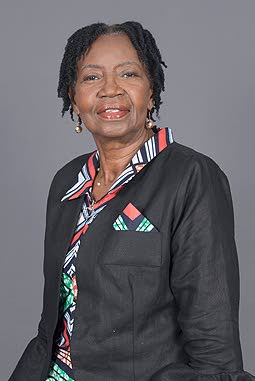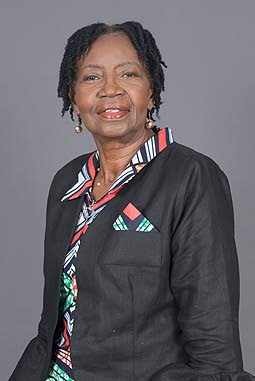Population change in Tobago, 1765-1940s

Dr Rita Pemberton
FROM THE LAST four decades of the 18th century, the size and composition of Tobago’s population were influenced by its acquisition by Britain in 1763, the subsequent introduction of plantation agriculture on the island, and the fortunes of the sugar industry across the 20th century. The division of the island into plantation lots, which were sold on the London market, was used to foster the development of the sugar industry during the second part of the 18th century, resulting in four major developments regarding the island’s population.
The first was the demise of the First Peoples population whose rights to the land were not recognised. In fact, as far as the Europeans were concerned, the land was unoccupied. As a result, the First Peoples communities were squeezed out of existence by the expanding plantations. Their numbers were decimated in conflicts with the new occupants and the remainder sought refuge on the Spanish mainland.
Secondly, the new landowners, managers, attorneys and skilled tradesmen were mainly Scottish, who formed a part of the dominant ruling class and, despite their relatively small numbers, impacted the culture that developed on the island. Up to present day the Scottish presence on the island is recorded in place names, family names and the names of plantations. In addition, because the rough life on the island was not considered ideal for their womenfolk, there were few white women in Tobago.
Thirdly, the most significant population growth in 18th century in Tobago resulted from the introduction of captive Africans to provide enslaved labour to the rapidly expanding sugar estates. Consequently, the African population, which was ten times the size of the white population, became the island’s numerically and culturally dominant group, and the basis for the formation of an African diaspora community on the island.
Whereas the white population was male dominated, the African population included both males and females. This factor, coupled with the shortage of white women, had implications for the later composition of the island’s population.
During the period 1765 to 1808, most of the island’s black population were African-born, but this changed after the termination of the British trade in captive Africans in 1808. In the ensuing years, as a result to the cession and mortality rates of the enslaved population, the number of African-born was reduced and that of the locally-born continued to increase. This occurred even though the number of African-born was increased by the introduction of 292 liberated Africans in 1852 and 225 from St Helena in 1862.
The fourth factor is the growth of a mixed-race (coloured) population on the island, which initially resulted from planter relationships with enslaved women. Particularly during the second half of the 19th century, mixed-race people enjoyed advantages in Tobago’s society because of their colour, which placed them higher than blacks on the social ladder.
Colour became an important social issue on the island and the coloured group was considered an intermediary force between the black and white elements of the population. Some mixed-race women, who were afforded opportunities to be educated abroad by their fathers, married some of the leading white administrators and created a class of elite-coloured ladies of the island.
Their offspring, who were able to obtain employment as estate managers or lessees, contributed to the growth of a coloured elite class, which became marked as a part of the dominant class of planters, merchants, senior officials and professionals, and who replaced the declining white presence as administrators on the island.
It is to be noted that while the coloureds identified with and aspired to white society, they were not fully embraced by the white population and, much to their distress, were excluded from the social activities of the white community.
However, there were divisions within the coloured community which set the elite coloureds apart from the rest. The majority of the coloured population constituted another tier on the social ladder above the blacks but below the elite-coloured population. They obtained positions as clerks, lower-level civil servants, teachers, artisans and mariners. The women worked as specialist seamstresses providing dressmaking services for white and upper-class women.
Some who managed to acquire properties, either by purchase or by inheritance, were able to use them to engage in some businesses in and around Scarborough where a few owned stores and shops, while others made and sold preserves and confectionery. The members of this group lived around Scarborough, particularly in Rockly Vale and Government House Road area.
The decline of the sugar industry resulted in further population changes on the island during the latter part of the 19th century and the early 20th century. During this period the island experienced several population movements. There was a significant decrease of the white population as they sold their plantations and left the island. There was also heavy migration to Scarborough, particularly from the windward region of the island. They sought better opportunities in Scarborough where better prospects for employment, education and communication existed. As a consequence, operating estates in the windward part of the island experienced a severe shortage of labour.
Leeward Tobago also suffered from migration as some of the occupants of this region sought better opportunities in Trinidad. Migration to Trinidad resulted in almost a quarter of the Tobago-born population residing in Trinidad by the 1940s.
Tobago’s African descended population was bolstered by immigrants from other Caribbean territories during this period. The majority came from Barbados, some to work on estates in windward Tobago, others as teachers at Bishop’s High School and other church-run schools, but there were immigrants from Grenada and Carriacou who came to Tobago as new estate owners with their workers, or as workers who came to assist the development of the cocoa industry.
In addition, there were smaller numbers of migrants from St Vincent and Antigua, some of whom were brought by the churches to serve as preachers and school teachers.
Tobago’s population changed dramatically from the First Peoples communities which were scattered across the island to the invasion of a small population of white men from Britain and the enforced migration and enslavement of a very large population of Africans who were forced to labour on the establishment and operation of the sugar plantations.
Under the British, Tobago’s population was distributed across the island wherever plantations were established. When the sugar industry declined and the island faced economic challenges, its history was characterised by population movements in both directions.
First the white population sold or abandoned their properties and moved out of Tobago. Then there occurred internal migration of members of the black population who, in their search for better opportunities, migrated from the rural areas to Scarborough and the leeward areas. But there was significant migration from the leeward areas to greener pastures in Trinidad.
However, immigration from the rest of the Caribbean served to help maintain the domination of the African numerical and cultural presence in Tobago.


Comments
"Population change in Tobago, 1765-1940s"